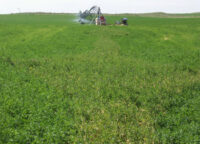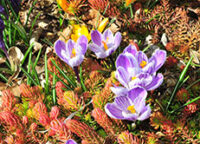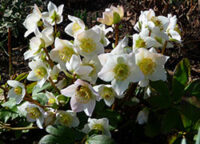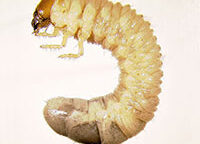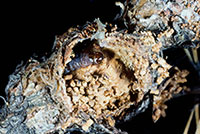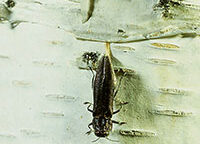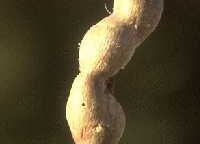- 09, 08, 2015
- No Comments.
- By
Importance of Plant Parasitic Nematodes in Colorado Crops – 2.952
Print this fact sheet by Ramesh Pokharel* (3/13) Quick Facts… Nematodes are wormshaped, nearly microscopic animals, many of which are virtually invisible to the unaided eye when they are in the soil or within plant material. Many nematodes feed on bacteria and fungi in the soil and are, in turn, preyed upon. Nematode survival, growth, […]
Take a Tour- 08, 28, 2015
- No Comments.
- By admin
Bulbs for Fall Planting
Loni Gaudet Colorado State University Extension Master Gardener in Larimer County August 29, 2015 As we head into fall, we think about our late season garden chores – cleaning up, mulching, gathering seeds and maybe setting up cold frames for winter veggies. But fall bulb planting is an easy way to jump-start the spring gardening […]
Take a Tour- 08, 25, 2015
- No Comments.
- By admin
Hellebores
Margaret Wolf Colorado State University Extension Master Gardener in Larimer County August 22, 2015 Hellebores (sometimes known as the Christmas or lenten rose) are evergreen members of the buttercup family. These plants flower in late winter or early spring and are hardy in Zones 4 to 9. The native range of hellebores is Greece, Turkey […]
Take a Tour- 08, 11, 2015
- No Comments.
- By admin
Billbugs and White Grubs: Control in Home Lawns – 5.516
Print this fact sheet by W.S. Cranshaw* (1/19) Quick Facts… Billbugs and white grubs are insects that damage turf grasses by feeding on the roots. Heavy infestations of white grubs may kill grass or attract mammals, such as skunks, that damage grass when digging to feed on grubs. White grubs are best controlled with insecticides […]
Take a Tour- 08, 11, 2015
- No Comments.
- By
Zimmerman Pine Moth – 5.591
Print this fact sheet by W.S. Cranshaw* (1/20) Quick Facts… Caterpillars of the Zimmerman pine moth damage pine trees by tunneling into the trunks and branches, often causing branches to break. Scotch and Austrian pines are particularly susceptible to injury. Evidence of injury are pale yellow, popcorn-like masses of sap that develop at in response […]
Take a Tour- 08, 11, 2015
- No Comments.
- By
White Pine Weevil – 5.606
Print this fact sheet by W. Cranshaw* (12/12) Quick Facts… Injury by white pine weevil is almost entirely limited to higher elevation areas of the state and foothill areas. The standard approach to manage white pine weevil is to spray insecticides in spring. A closely related species, Pissodes terminalis, causes similar injury to lodgepole pine […]
Take a Tour- 08, 11, 2015
- No Comments.
- By
Tent-Making Caterpillars – 5.583
Print this fact sheet by W.S. Cranshaw* (6/13) Quick Facts… Figure 1: Egg mass of western tent caterpillar. Figure 2: Tent of western tent caterpillar. Several species of caterpillars construct a silken shelter or tent. In spring, tent caterpillars are common. After midsummer, the most common tent-making caterpillar is the fall webworm. These insects attract […]
Take a Tour- 08, 11, 2015
- No Comments.
- By admin
Shade Tree Borers – 5.530
Print this fact sheet by W.S. Cranshaw* (1/19) Quick Facts… Wood borers are insects that develop underneath the bark of trees and shrubs. Certain beetles and moths are the most common borers. Insecticides can best control most shade tree borers if they are applied when adult insects are laying eggs on tree trunks. Most wood […]
Take a Tour- 08, 11, 2015
- No Comments.
- By
Scale Insects Affecting Conifers – 5.514
Print this fact sheet by W.S. Cranshaw * Quick Facts… Several species of scale insects develop on conifers in Colorado. Pine needle scale and striped pine scale are particularly damaging. The most vulnerable stage of the scale insect’s life cycle is the crawler stage, an active unarmored stage that occurs after egg hatch. If insecticide […]
Take a Tour- 08, 11, 2015
- No Comments.
- By
Poplar Twiggall Fly – 5.579
Print this fact sheet by W.S. Cranshaw * (6/13) Quick Facts… Figure 1: Galls produced by twiggall fly, with emerging pupae. Figure 2: Continued expansion of galls on older wood. Poplar twiggall fly produces a smooth knot-like gall on the twigs of aspen. These galls continue to expand for years after they are produced. The […]
Take a Tour
